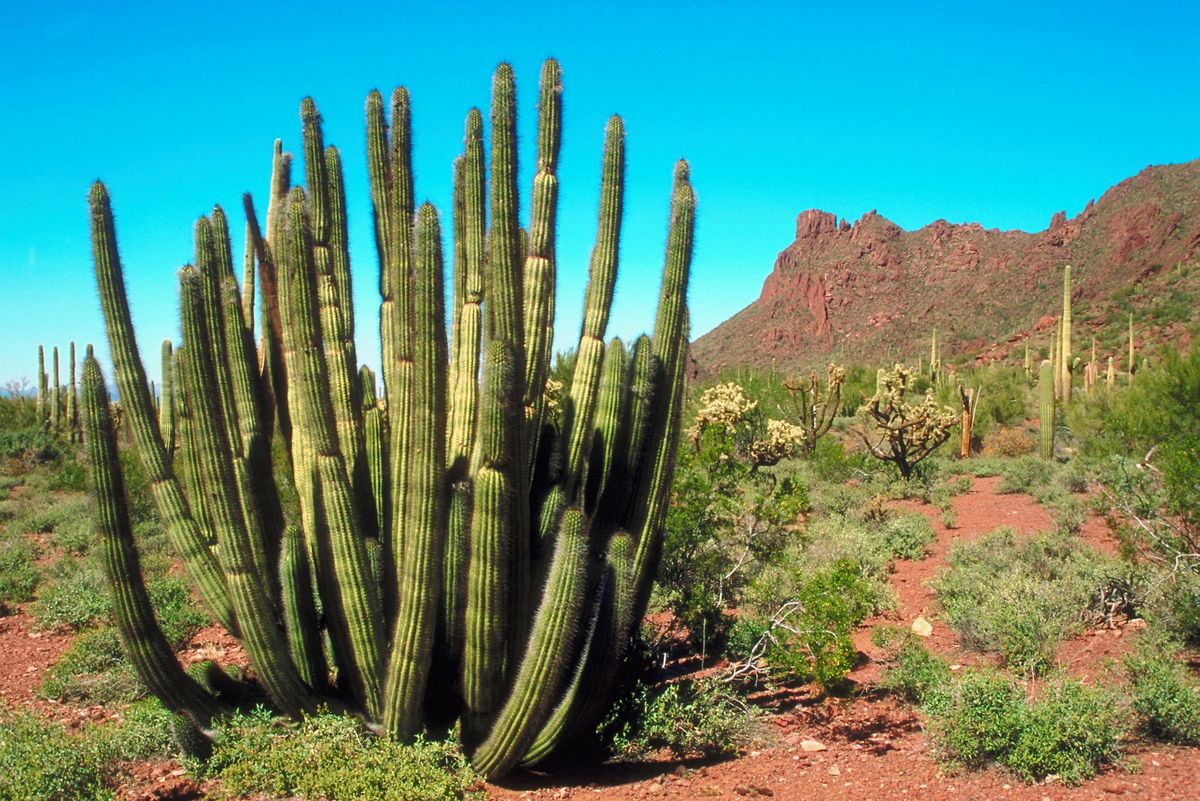By Lauren Scott, Arizona Farm Bureau Intern
The organ pipe cactus, or stenocereus thurberi, if you want to get scientific, is a cactus that grows wild throughout Arizona and Mexico’s Sonoran Desert. It is exclusive to the southwestern part of Arizona and the western part of Mexico, and grows between 1,000 and 3,500 feet.

Next to the Saguaro it might not look THAT big, but the organ pipe is the second biggest cactus in the United States, the Saguaro being the first. Instead of having a base, trunk, or stem, the organ pipe cactus’ arms grow up out of the ground in a cluster, with five to twenty arms making up one cactus. These arms have a six-inch diameter, can grow up to 25 feet tall, and sport 12 to 17 ribs around their thin bodies. They are also covered in spikes or spines, like any cactus, that poke outwards at the crest of each rib.
Because organ pipe cacti are sensitive to cold temperatures and frost, they typically grow on the south facing slopes of hills and mountains where they can soak up warm sun rays. They can, however, be grown in yards, and often are the centerpiece of an urban desert landscape.
On top of each of the organ pipe’s long arms, flowers bloom every May, June and July. These flowers are either white or lavender in color, and only bloom at night. The flowers become pollinated by bats during the time they are in bloom, and the cacti end up growing large red fruits all over the tops of their arms. When the fruit become ripe in the late summer, they lose their spines, and can be harvested to eat.
These fruit, along with the fruit of many other cacti found in Arizona, were the staple ingredient in Native American cuisine, and are still picked today to create tasty jams, jellies, candy, and drinks among other foods.
Organ pipe cacti will not only add beauty to your yard, but they will bring some Arizona heritage to it as well. If you want to add an organ pipe cactus to your landscaping at home, make sure you purchase it from a nursery or garden center. Don’t go stealing them from the desert, as they are protected in Arizona by law.
If you want to learn more about different cacti that are found in the Arizona deserts, take a look at Fill Your Plate’s other cacti profile where you can learn about the saguaro and the prickly pear cactus!

